Solar Imaging
It is possible to image/observe the Sun safely, provided you have the right equipment and take the proper safety precautions when doing so. Be sure you understand what you are doing. Ask for help from other solar imagers in the society if you need advice.
The Sun is an interesting object to image and observe. It is quite dynamic with features that can change over the course of a few hours. A guide to what features are present can be found here (Note: it takes a bit of time to load).
There are a several ways to image the Sun with the most commonly used being “White Light” and at “Hydrogen alpha (Ha)” wavelength. White Light is general good for revealing Sunspots whereas Ha will show more surface details and prominences.
Solar Eclipses also make for really good imaging opportunities. Society members have recently been lucky in capturing eclipse images, some of their images can be found here
FEATURED IMAGE
This is where we like to showcase one of the many images that has been shared by the members.
This image taken by John Young on 4th October 2024, John used a Seestar S50 smart telescope fitted with its dedicated Solar filter.
This image was taken a day after the largest X class flare of the current Solar Cycle 25, it was rated at X9.1 (for info on flare classes see here). I have circled the active region (AR3842) responsible for this. The Spaceweather.com website has details of this event here.
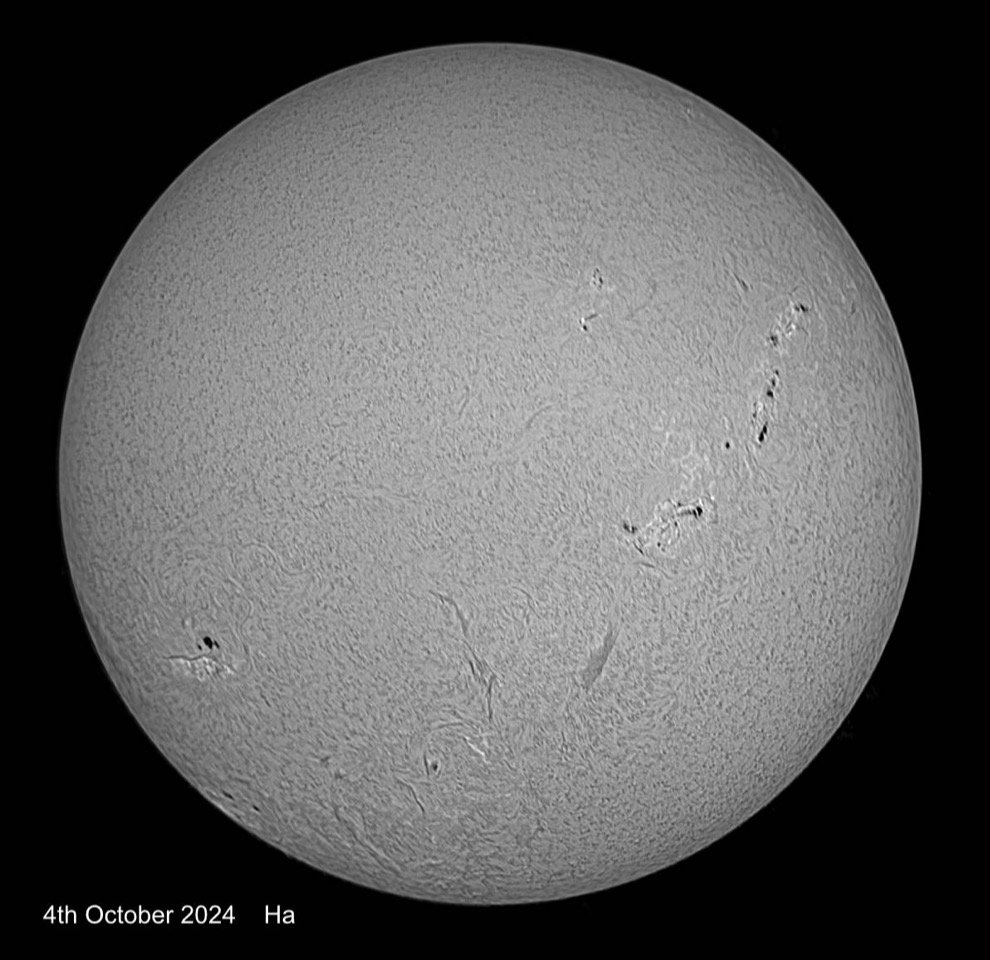
The "featured Sun" image this version taken in Ha by John D on the same day 04/10/2024.
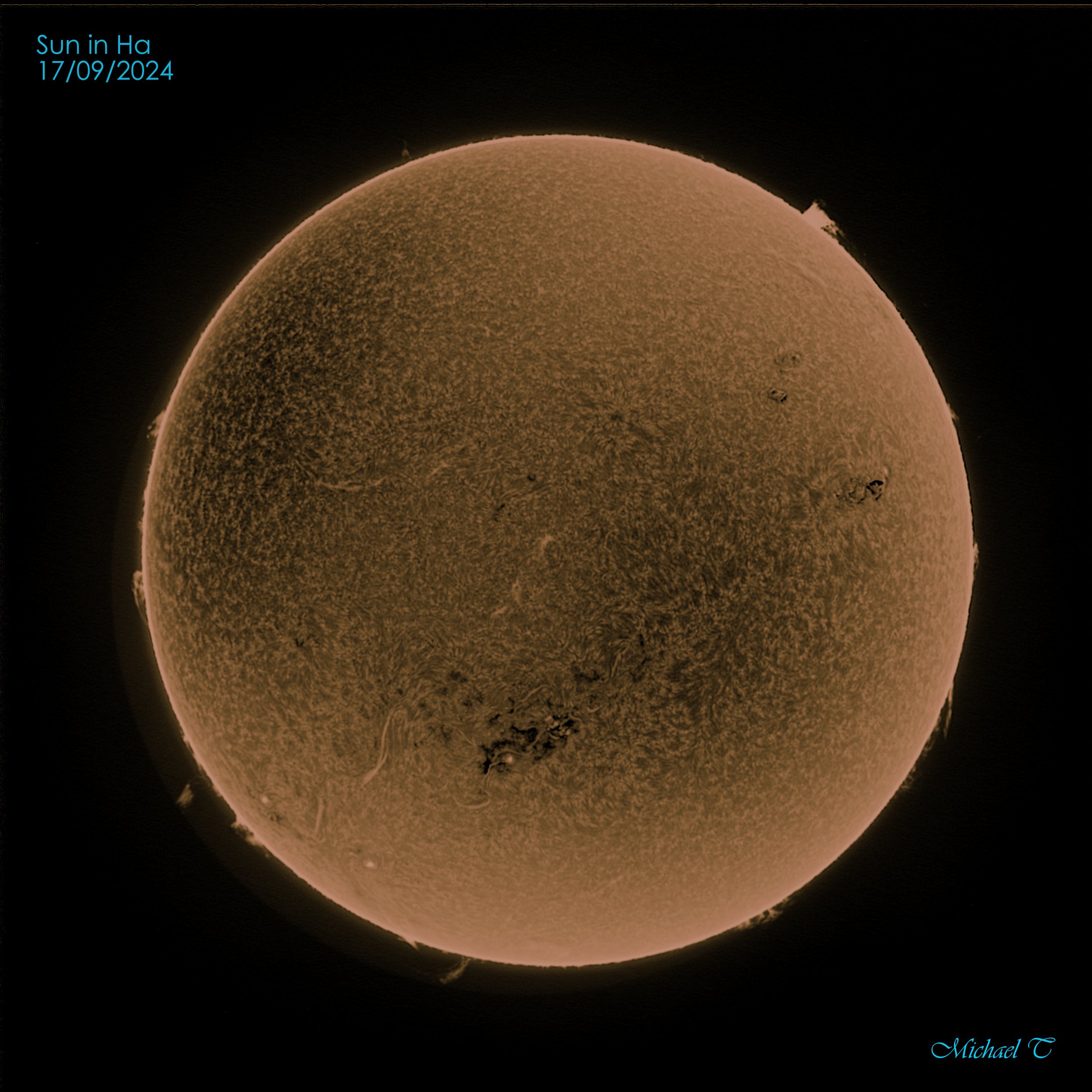
Sun imaged in Ha and then colour added taken by Michael T on 17/09/2024.
Sun viewed in white light by John D showing Sunspot AR3664 on 09/05/2024
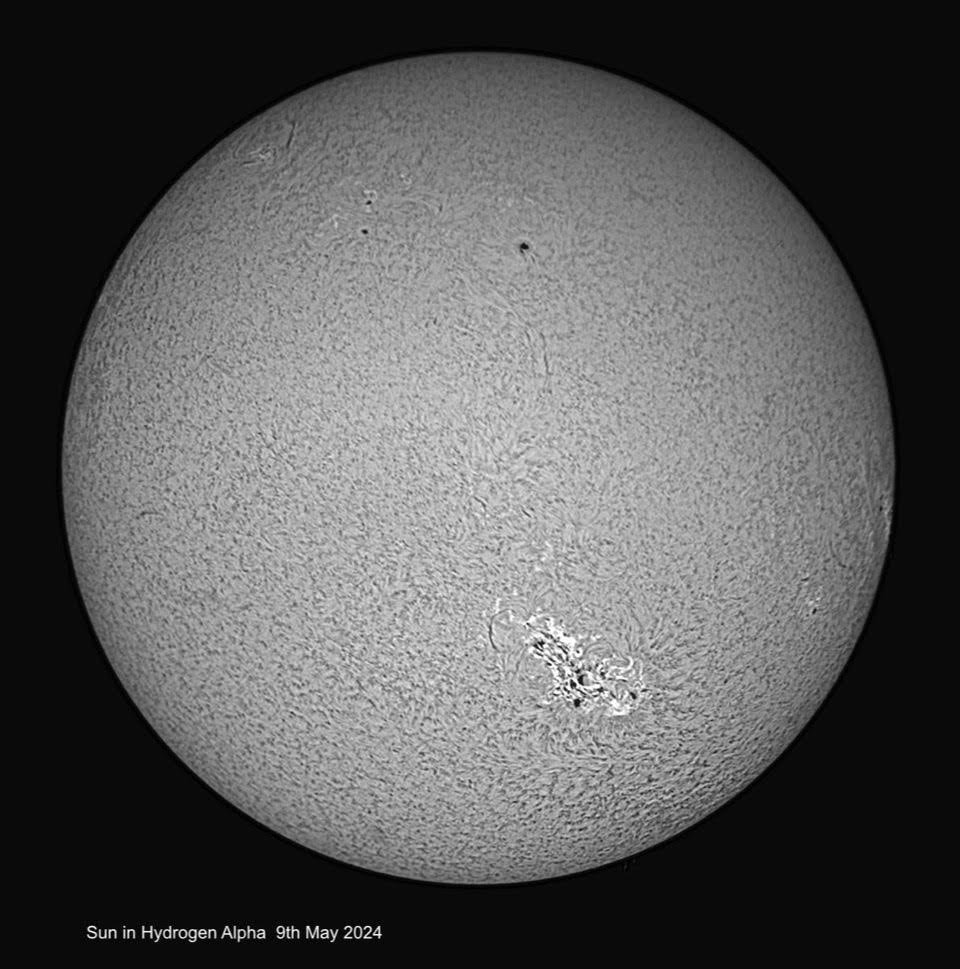
Sun viewed in Ha by John D showing Sunspot AR3664 on 09/05/2024

Sun 18/04/2024 by Michael T using a Seestar S50
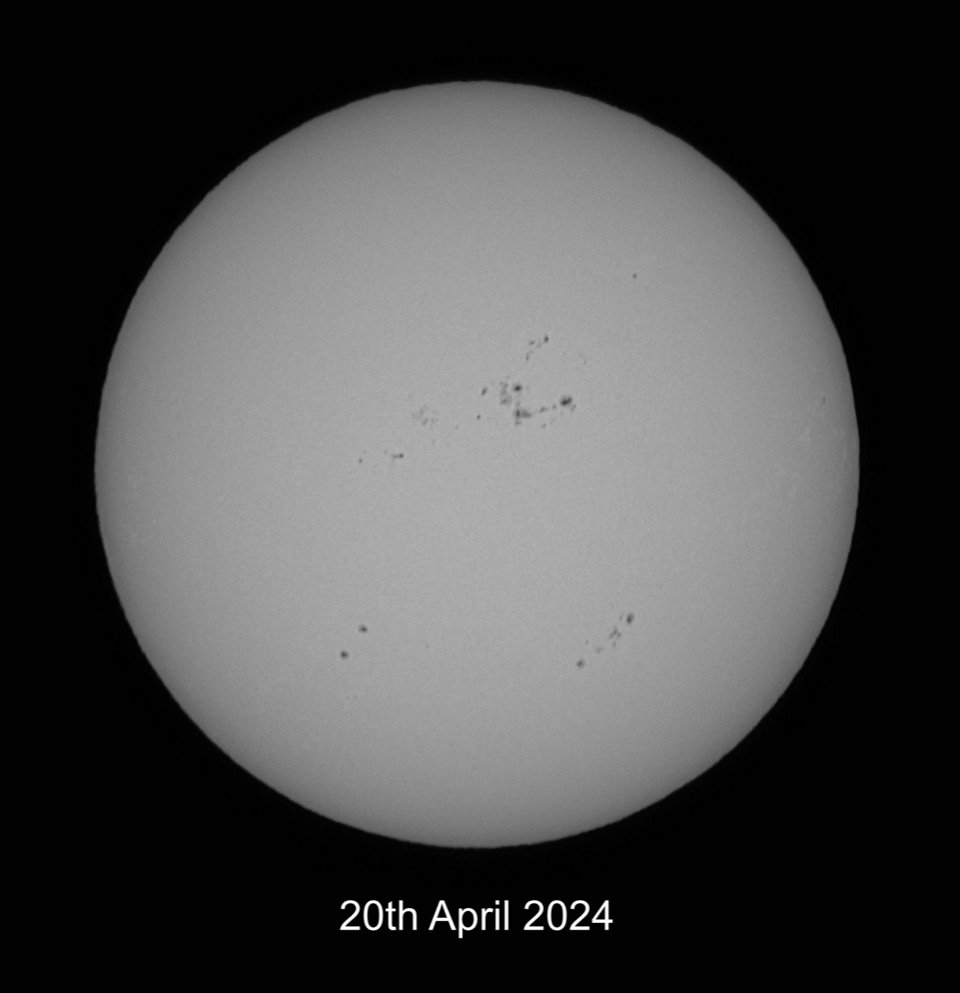
Sun 20/04/2024 by John D, White Light
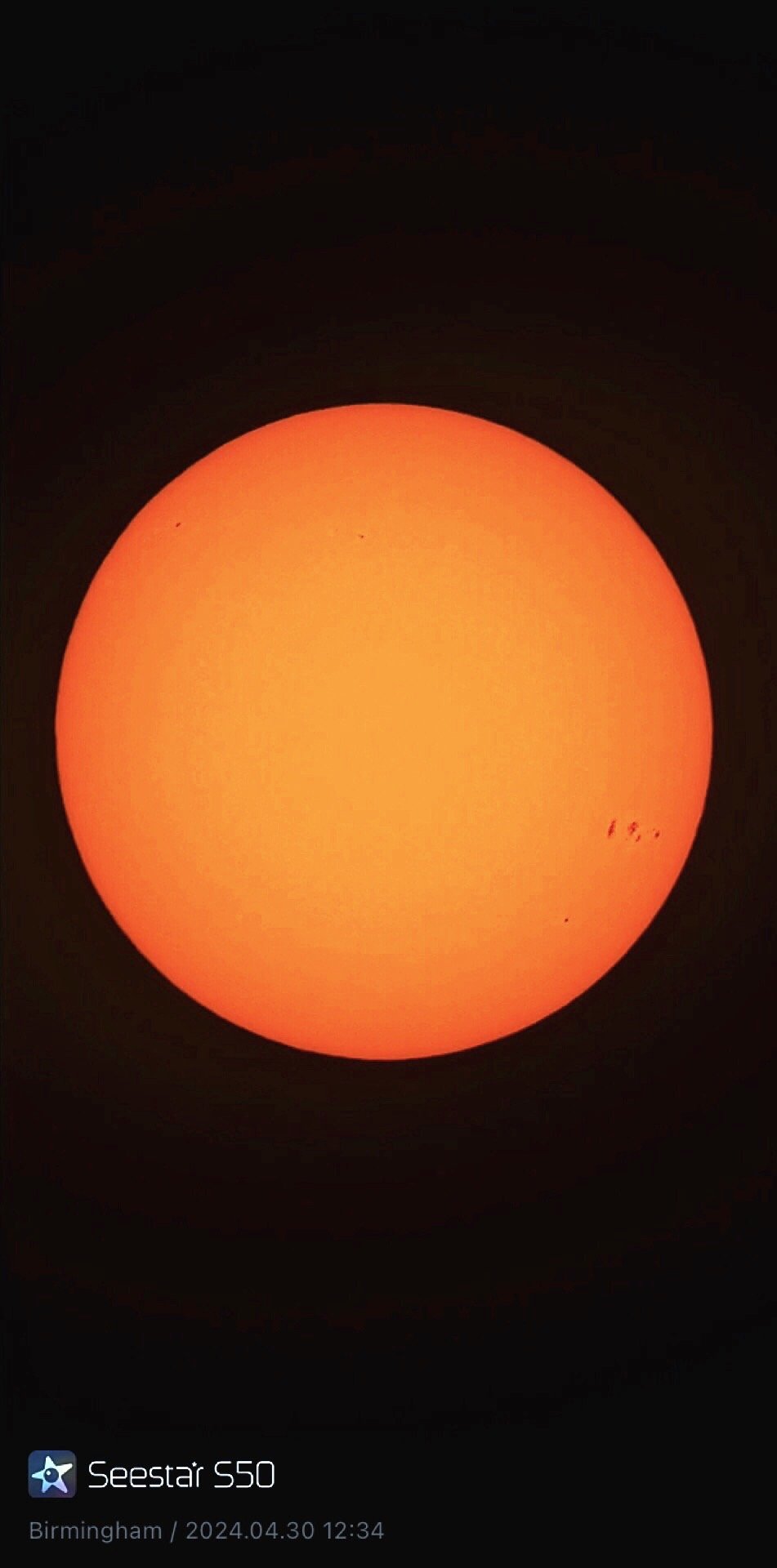
Sun 30/04/2024 by John Y using a Seestar S50
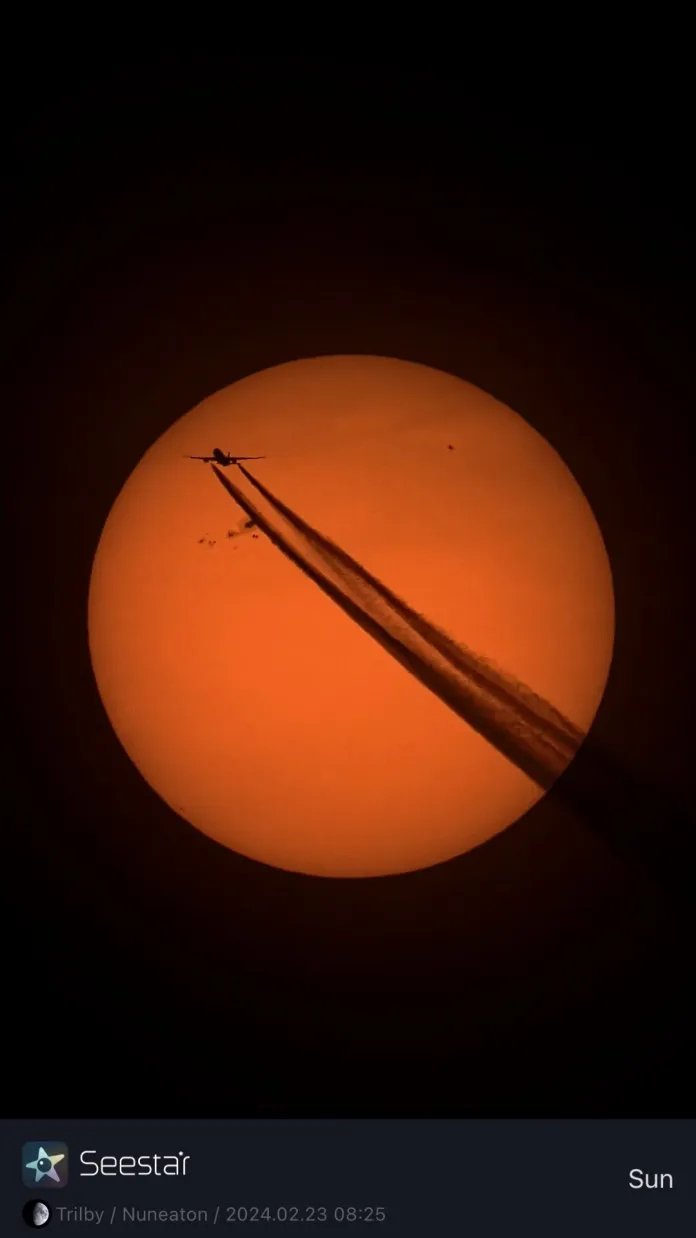
Sun and Plane by Ben Stanley using a Seestar S50.

